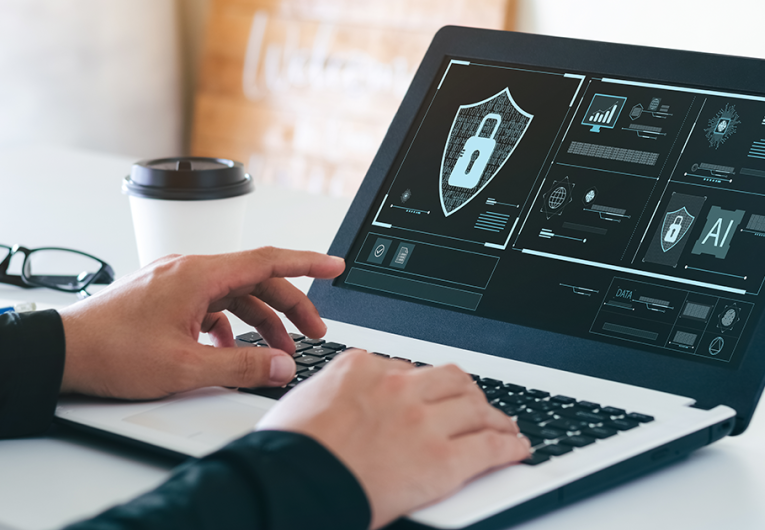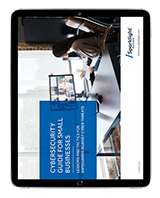
The Necessity of MFA (Multi-factor Authentication)
In today’s digital-first world, protecting sensitive information is no longer optional, it’s essential—especially for small businesses handling sensitive data. Yet statistics show that as few as 34% of smaller businesses have adopted multi-factor authentication (MFA). That leaves the majority vulnerable to increasingly sophisticated cyberattacks.
If you’re a small business owner, the message is clear: implementing MFA is one of the most effective, affordable, and straightforward steps you can take to strengthen your defenses.
What Is MFA? Understanding Multi-Factor Authentication for Small Businesses
Multi-factor authentication requires users to provide two or more credentials to log in—something they know (like a password), something they have (like a smartphone or security key), or something they are (like a fingerprint or facial scan).
Unlike a single password, which can be stolen or guessed, MFA ensures that even if one factor is compromised, attackers face another barrier.
Why Passwords Alone Are Not Enough
While passwords are the default legacy method, they are often the weakest link in small business cybersecurity. Employees reuse them, share them, or create easy-to-crack combinations. Cybercriminals exploit this through phishing, credential stuffing, and brute force attacks.
Once inside, they can steal data, install ransomware, or take control of systems. According to Verizon’s Data Breach Investigations Report, most hacking-related breaches involve stolen or compromised credentials.
How MFA Protects Your Business
- Data Breaches: Breaches can devastate small businesses, leading to lost trust, legal costs, and penalties. MFA makes it harder for stolen credentials alone to grant access.
- Ransomware Attacks: Criminals often rely on compromised passwords to launch ransomware. MFA can block those attempts before they succeed.
- Remote Work: With employees logging in from anywhere, MFA ensures secure access no matter the location.
Why MFA Adoption Remains Low
If MFA is so effective, why do most small businesses still go without it?
- Perceived Complexity: Many owners think MFA is difficult to set up.
- Cost Concerns: Some assume it’s expensive, though many services now include MFA free of charge.
- Lack of Awareness: Small businesses often underestimate their risk, believing only large enterprises are targeted.
The reality is the opposite—cybercriminals often see small organizations as easy entry points.
Simple Steps for Small Businesses to Implement MFA Today
The good news: implementing MFA doesn’t have to be difficult.
- Start with email and cloud accounts like Microsoft 365 or Google Workspace, which have built-in MFA.
- Protect critical systems first, such as those holding customer or financial data.
- Educate employees so they understand how MFA works and why it matters.
- Use authentication apps like Google Authenticator or Microsoft Authenticator for secure, convenient access.
The Business Case: Why MFA Pays Off
The average global cost of a data breach now exceeds $4 million, according to IBM’s Cost of a Data Breach Report. While small businesses may not face losses on that scale, even a fraction could be devastating.
MFA is also a trust-builder. Showing customers and partners you take security seriously can be a competitive advantage, proving that you value their data as much as your own.
Integrating MFA into a Broader Security Strategy
MFA delivers the greatest protection when integrated into a layered cybersecurity strategy. For example, Zero Trust Network Access (ZTNA) frameworks take the principle further by requiring MFA or two-factor authentication every time someone attempts to connect. This “never trust, always verify” model ensures that every access request—whether inside or outside the network—is authenticated and validated, helping small businesses maintain strong, continuous protection.
Passwords Alone Don’t Cut It—Take Action Now
Small businesses can no longer afford to rely on passwords alone. Multi-factor authentication is a simple, cost-effective way to block data breaches, stop ransomware, and secure remote work environments.
Whether you enable MFA on your existing accounts or incorporate it into a broader Zero Trust approach, every step you take strengthens your defenses. Acting now doesn’t just protect your systems—it safeguards the future of your business.
The trends, insights, and solutions you need to grow your business.
By signing up, you’re subscribing to our monthly email newsletter, The
Wire. You may unsubscribe at any time.
Your information stays safe with us. Learn more about our privacy
policy.











![[#MSP_NAME#] Logo](/themes/sparklight_business/images/transition-logos/migration-banner-logo-[#MSP_CD#].png)
